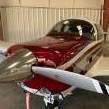Knots Landing
-
Members Online
- Alan Fox
- FlyinMojo
- jcolgan
- EricJ
- tony
- KSMooniac
- redbaron1982
- Skyland
- Jerry 5TJ
- ericrynehess
- turbofan
- skykrawler
- exM20K
- JB2000
- Marc_B
- AndreiC
- pgray
- Conrad
- Kelpro999
- Marc B
- ElkoRandy20J
- good2eat
- Tmack201
- TCC
- prillayo03
- FlyingScot
- Scott Ashton
- Rick Junkin
- Mark89114
- MooneyMax
- NotarPilot
- Ron McBride
- Slick Nick
- ziggysanchez
- kaba
- Nico1
- Rmfriday
- flyboy0681
- Hank
- Stanton R
- Fly Boomer
- MDMooney
- Ragsf15e
- Guillaume
- McMooney
- Vance Harral
- cbarry


Recommended Posts
Join the conversation
You can post now and register later. If you have an account, sign in now to post with your account.